Having worked in digital marketing for over two decades and founded one of the pioneering agencies, Victor Benady’s interest in art was inspired by punk memorabilia and the Malcolm McClaren phenomenon. Today, he has over 300 artworks in his collection, with many works by emerging British artists, works of video art and post-internet art. Victor Benady has told Larry’s List why he quit his job as Global Creative Director and which artist can make him write a cheque without any consideration.
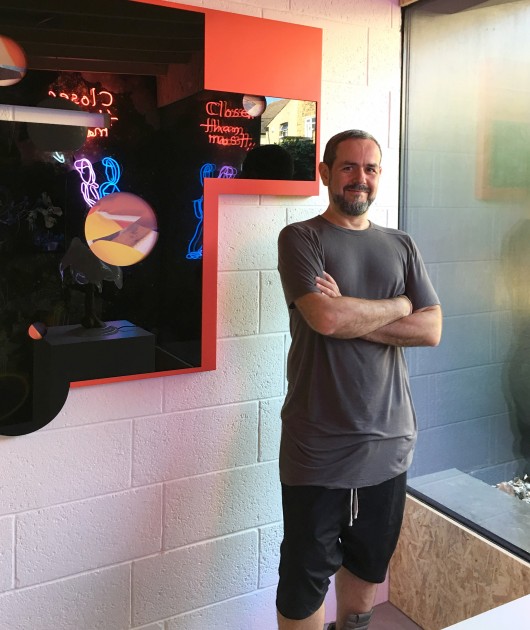
Collecting
What made you want to start collecting art? When was that?
Collecting kind of snuck up on me. My father is a gallerist and I was destined to work in the art world, doing an internship at Christie’s at the age of 18. But that wasn’t a great experience and it set me off in a different direction, rejecting the art world. Collecting is in my blood though and I can’t escape it. My original motivation was I think to replace the artworks that my father had very generously given me to fill the walls of my first home with works that reflected me and my generation and then it just snowballed from there.
What was the first artwork you purchased? How many artworks do you own today?You know, I honestly can’t remember. But I had an early interest in punk memorabilia and the whole Malcolm McClaren phenomenon, so I think it might have been a Jamie Reid screen print of the Sex Pistols Fuck Forever. Like most people, I started my collecting prints, and I think my first acquisition of a ‘proper’ artwork was a Bridget Riley edition. Since then, my collection has grown to around 300 pieces at the last count.
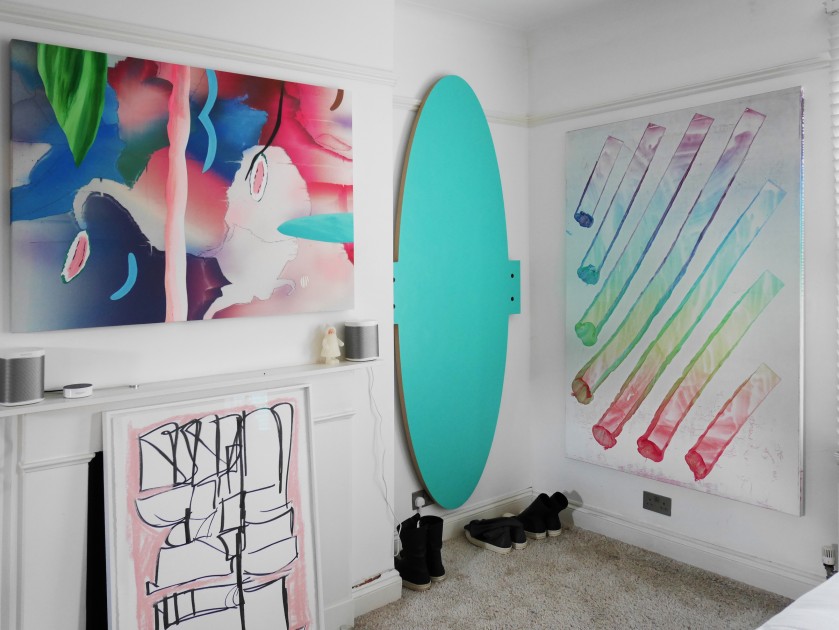
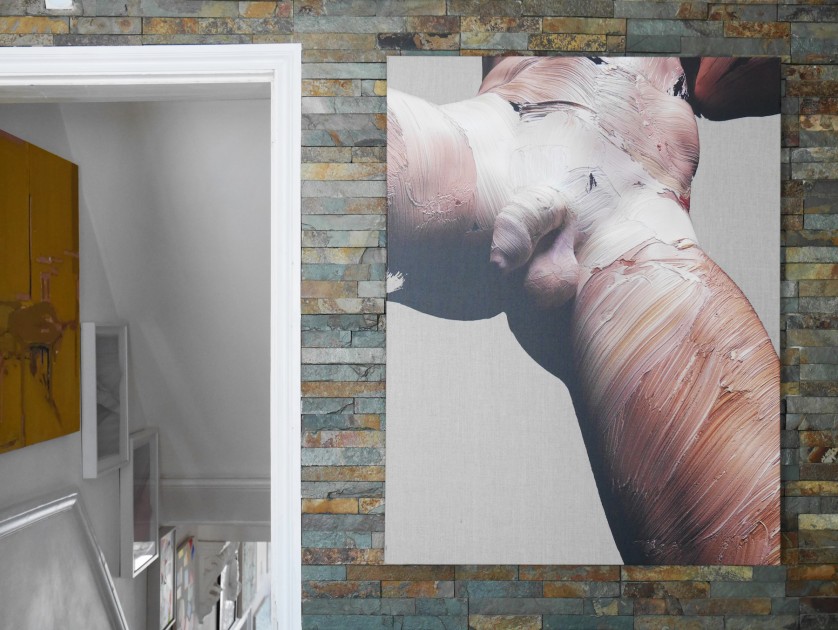
You are interested in emerging British artists, such as Matthew Stone. How are they different from the generation of Young British Artists (YBAs)?
There’s something very exciting going on in London at the moment, which I don’t think enough people are cottoning on to just yet. There is a sense of real camaraderie between galleries, as well as healthy competitiveness amongst themselves, and a new generation of artists. I think that’s created an environment where artists are confidently stepping out of the long shadow of the YBAs and producing work that comes from a different place. To me, the YBAs, for the most part, produced product that was very self-conscious and market-driven. A lot of artists in subsequent generations tried to maintain that ethos, but there now seems to be a generation that’s confident enough to leave that behind. You mention Matthew Stone, who is exploring this exciting intersection between photography, painting and computer-generated imagery, but I am also excited by artists like Mary Ramsden and Gabriel Hartley, who both remind us that painting still has huge scope even in this digital world, and in particular Samar Scott, who is carving a unique path with her ephemeral water works and explorations of materiality, along with many others.
Is there any particular type of art that has consistently attracted you, or anything that unites all the works you have acquired?
If there’s one characteristic that unites the work I collect, it’s probably a sense of playfulness. I struggle with work that’s too austere. I’m also a sucker for a good painting, and it’s the one thing that will make me break my collecting rules and go off-piste. At last year’s Summer Exhibition at the Royal Academy, I bought a magnificent painting by an artist who hadn’t picked up a paintbrush until her 60’s. Of the 1,000 plus works on show, it was the one that spoke to me the most.
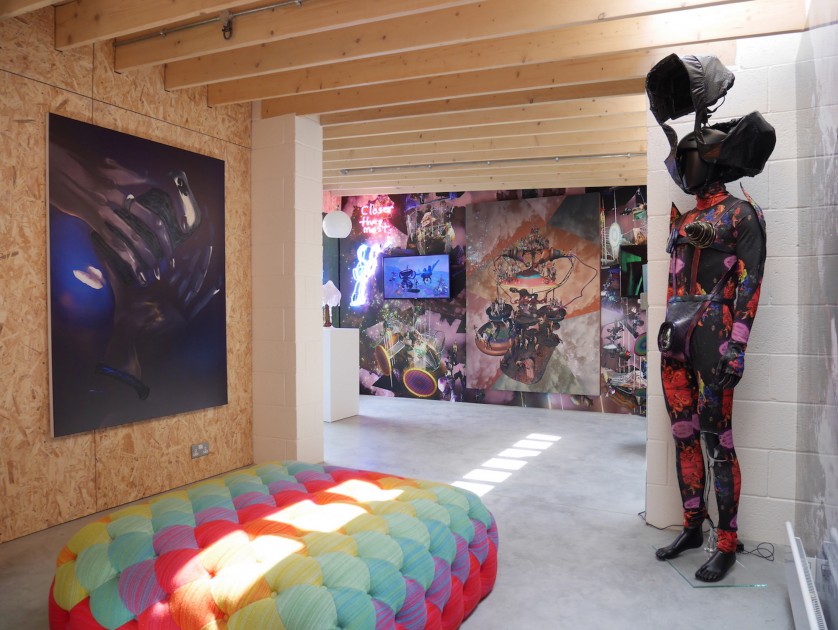
You are collecting post-internet art. Why are you interested in this genre?
My background is in digital marketing. I’ve been working in that sphere for 21 years and founded one of the pioneering agencies in this area. Back in the 90s, there were no rules so we invented them. And then we broke them and invented new ones. It was an exciting time. Now the frameworks that surround the internet are pretty established in the commercial sense, so it’s really down to artists to invent and break the rules now. And the opportunities for that are limitless.
The demand for post-internet art on the collector side is rising. How will the genre develop in the future?
Who knows? There are some fairly clear tech mega trends that art will adapt to, like virtual or augmented reality and artificial intelligence, but that’s just the tech. Just because paint exists doesn’t mean that all painting is good. What artists will do with these opportunities is anybody’s guess, but I think we will see more ephemeral works as artists let go of the permanence of the physical world. One of the most exciting projects I’ve seen in recent years was by a young British artist called Oliver Sutherland, who worked with a biotech scientist to combine the DNA of a jelly fish that glows and a plant that grows aggressively, to create the ‘recipe’ for a new kind of weed in code that can be 3D-printed once 3D printers are able to recreate organic matter, which is only a matter of 15 to 20 years away to become a reality. The manifestation of the work, as it currently stands, is the code, which has been released as a torrent on the internet – torrents using a similar strategy to weeds in order to spread. When Oliver told me about this work, my mind was blown and the endless possibilities become clear.
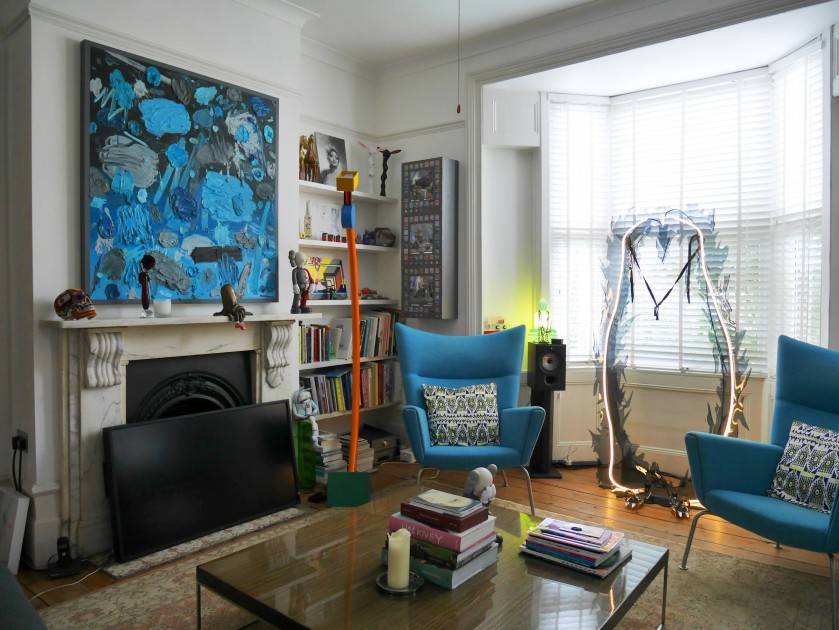

Where do you display your collection?
At home. We’ve just built an additional space in our garden, which has been dubbed the bunker and may be used for rotating shows or installations – time will tell. I sometimes lend works to museums and institutions.
Do you own video art, such as by Cory Arcangel? How do you display them in your apartment?
I own a number of video works and they tend to fall into three categories: work that has no narrative and plays on a loop, which is very easy to display, and I have works by Cory Arcangel and Tabor Robak which are permanently installed; work that has a narrative but that is more visual and can be dipped in and out of without necessarily having the sound on, for example Jacolby Satterwhite, by whom I have seven video works played on four screens around the house; and finally, work that has a distinct narrative that needs to be followed and requires sound – this is the hardest to display, and I’m still working that out – I have works by emerging British artists Elliot Dodd and Samuel Fouracre that fall in to this category. And then, of course, there is an entirely new category – I recently acquired a virtual reality work by Jacolby Satterwhite that will need a Oculus Rift to view it. The work hasn’t arrived yet, but I’ll have fun working out how to display that without it looking like a PC in the corner with lots of wires.
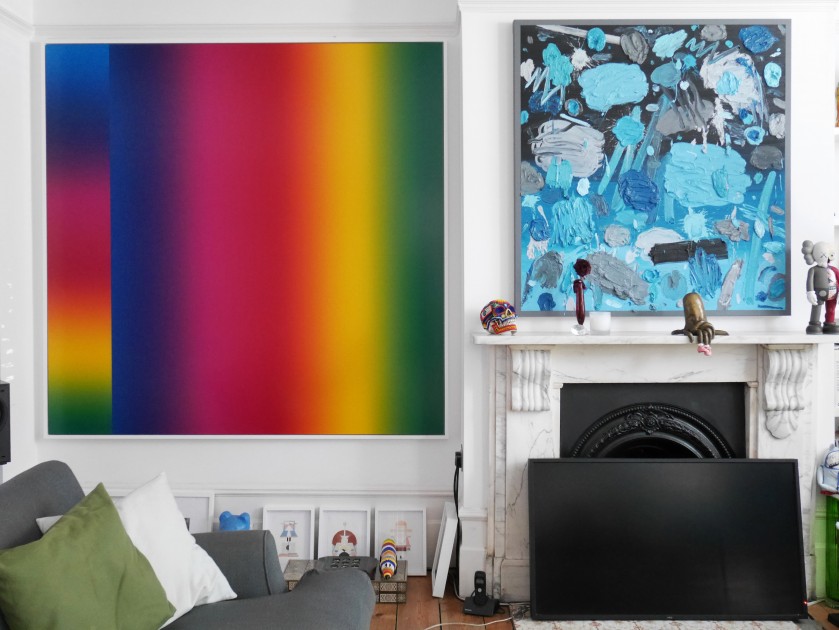
We know that you just commissioned two new works for your apartment. Could you tell us a bit more about the works, and how they will get installed in your home?
I wouldn’t say commissioned, but in both instances, they are works where I acquired the digital file and it can be printed at any size, depending on the installation. In the case of Jared Madere, I acquired a work that he conceived as being printable on literally anything, whether it’s a t-shirt or a huge banner. That will be printed as wallpaper in my case. And then, there’s a Jacolby Satterwhite work which is intended to be wallpaper, but will also have two video screens, a neon light and a large c-print incorporated into it to create a full immersive 5m wide installation. I hope to have these both installed by the time this interview runs. They’re both in production at the moment.
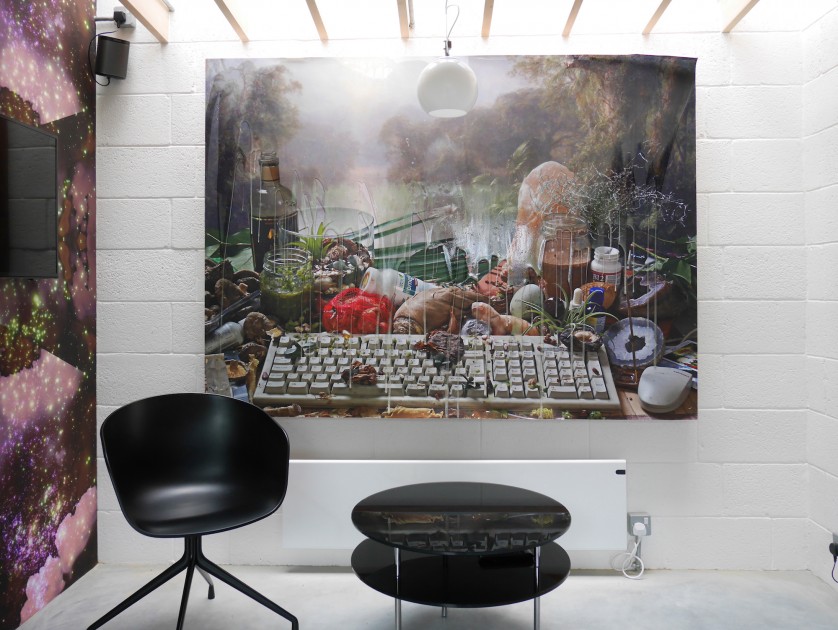
What considerations guide you to make a purchase? Is there any kind of artwork that can make you write a cheque without any consideration?
The decision process is almost like a flow diagram that goes through a number of criteria and decision points. Is my reaction to the work immediate? Quite often this isn’t a good thing and it’s the slow burners that I try to focus on more. Does it fit in with what I am trying to collect? And if it doesn’t, is it a worthy exception? Does it move my collection forward? Or am I getting stuck in a comfortable or familiar rut?
Where can it be displayed? This is often the most complex question as there are so many considerations. I’ve left me more impulsive habits behind me when it comes to art. Is there anything I would write a cheque for without consideration right now? Probably a painting by Secundino Hernandez.
How important is it for you to meet the artists who created the artwork?
Very important, although not always practical. I’ve sparked a friendship with a few of the artists I collect, and it’s very rewarding.
As an active Instagrammer, how has social media changed your collecting habits?
I don’t think social media has changed my collecting habit per se. As someone who’s been involved in the internet since very early on, I think my collecting habits have evolved with the medium. I very rarely buy off a JPEG though, unless I’m very familiar with the artist’s work and can fully appreciate the physicality of a piece without seeing it in the flesh.
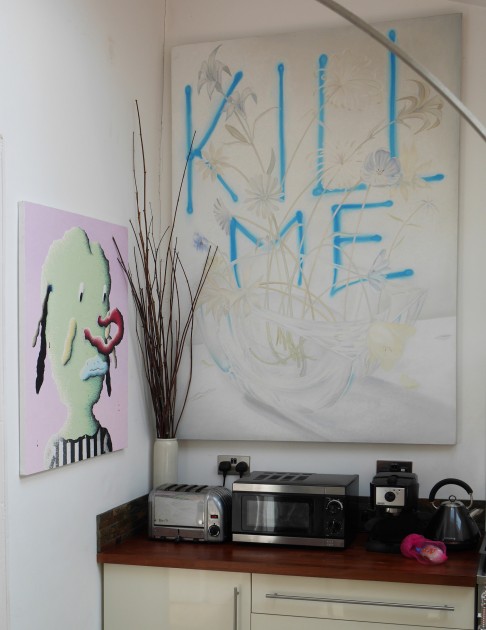
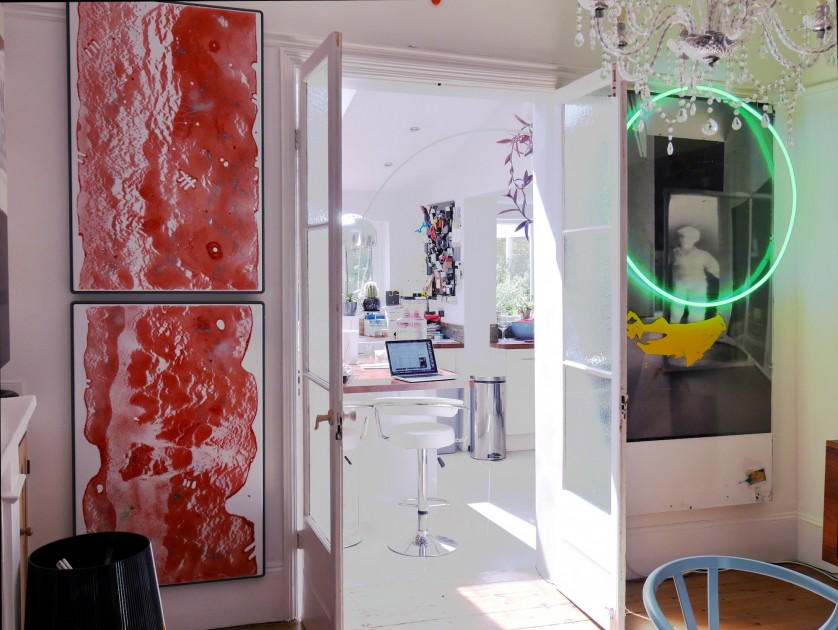
The Art World
Who inspires you in the art world?
Some of the young London galleries that I’m working with at the moment. Their commitment to their artists and their programmes against difficult odds is a constant source of inspiration. I include The Sunday Painter, Studio Leigh, Kinman and Union Pacific in that category.
Can you name three emerging artists who should be on our radar?
Samara Scott, Daiga Grantina and Rannva Kunoy are my top three right now. All female artists, interestingly.
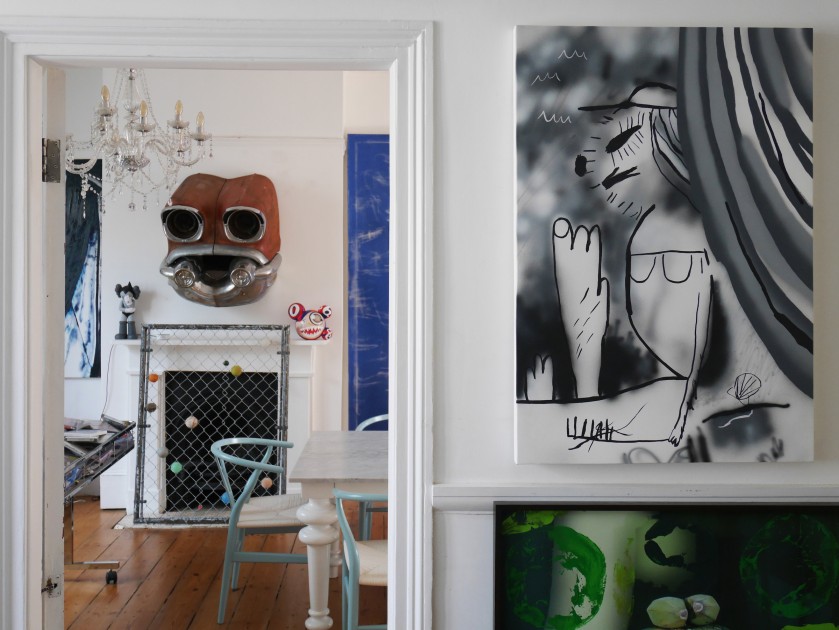
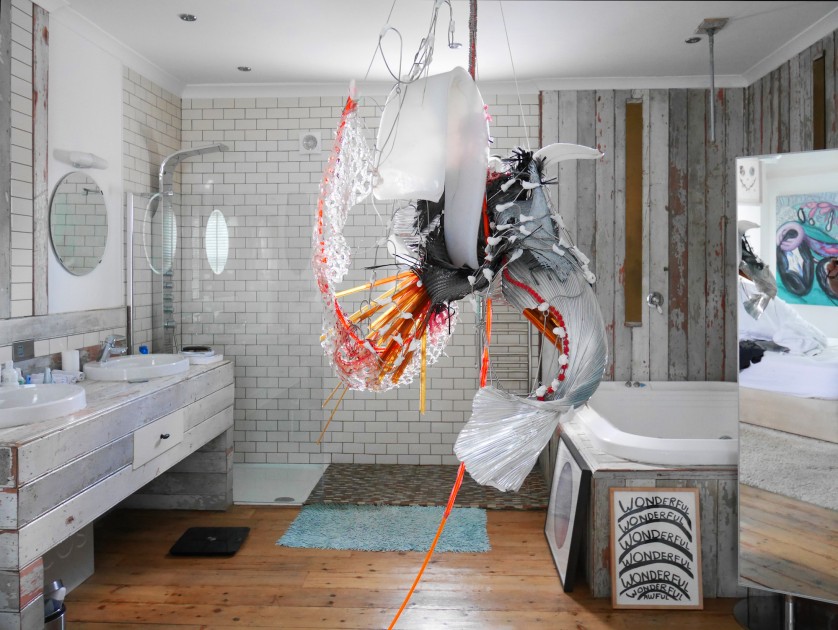
What is your art routine? How do you regularly involve in art and how much time do you spend on art-related activities?
It takes up a good chunk of my time, pretty much every day, whether it’s just reading or visiting galleries, fairs and museums, or socially. It’s an interesting one, given the upbringing I had, but I would never consider making the transition to art being my profession as some collectors do. That would take away the fun I think.
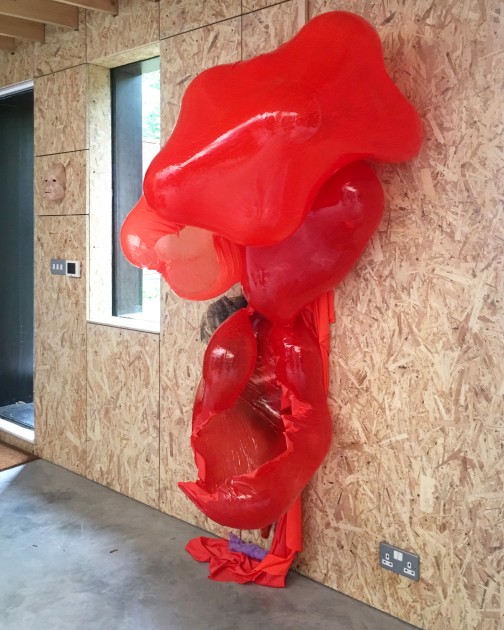
How is your experience as the Global Creative Director of a communication agency? How does it relate to your passion for art?
Actually funnily enough, I just left that career behind me because I couldn’t reconcile it with my deep interest in art and culture for the most part. It’s only been a month. The main reason for leaving my previous job is to focus on a start-up called Ateliair, that I believe will transform the relationship between big metropolitan cities like London and artists and galleries. I hope to have that launched by the autumn once we’ve managed to raise the capital to finance it. It’s something that I am incredibly passionate about and will finally allow me to reconcile my years of expertise in digital business with my passion for art.
What are your other upcoming projects?
Since I quit my job, so far I’ve been focusing on a couple of non-executive directorships and curating a very ambitious show that will run over the summer, opening July 6th. We will have five enormous and performative, site-specific installations at Liberty, the London department store. The show is a partnership with rock band Pink Floyd and the Victoria & Albert (V&A) Museum and is unlike anything I’m aware of having been attempted before. It’s a completely crazy idea, and I’m very lucky to have been able to persuade some incredible artists to take part, including Jared Madere, Joris Van de Moortel, Julie Verhoeven and Alex Morrison. More on that will be revealed on my and Liberty’s Instagrams over the coming weeks.
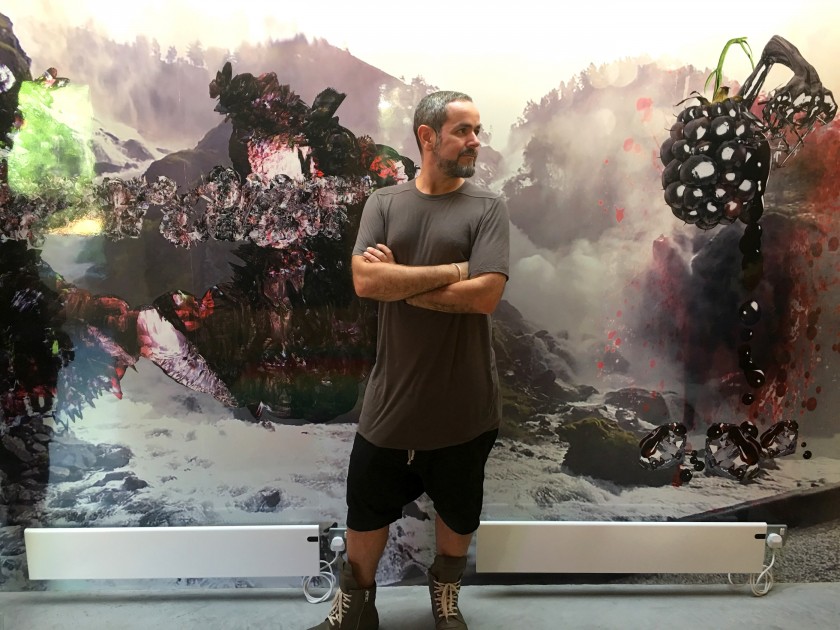
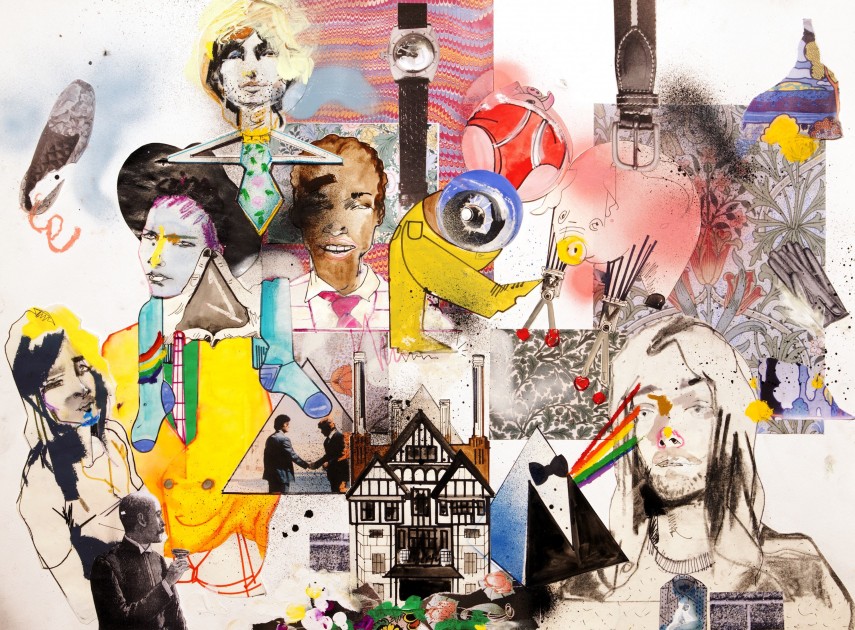
Instagram: @mrbenady
Twitter: @victorbenady
A selection of artists Victor collects:
Cory Arcangel
Daiga Grantina
Jared Madere
Kate Steciw
Rannva Kunoy





